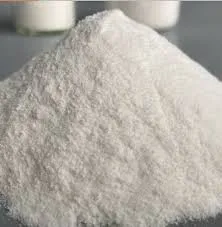
Nov . 20, 2024 14:10 Back to list
tile adhesive hpmc
The Role of HPMC in Tile Adhesive Applications
Tile adhesive has become an essential component in modern construction, enabling the seamless and lasting installation of various types of tiles. Among the numerous additives used in tile adhesives, Hydroxypropyl Methylcellulose (HPMC) stands out due to its unique properties and benefits. This water-soluble polymer plays a pivotal role in enhancing the performance and functionality of tile adhesives.
The Role of HPMC in Tile Adhesive Applications
One of the primary advantages of incorporating HPMC into tile adhesive formulations is its ability to improve the workability of the adhesive. HPMC helps to create a smooth and creamy texture, allowing for easier application and spreading. This is particularly beneficial for construction workers and tilers, as it enhances their efficiency and productivity on-site. A well-formulated adhesive with HPMC can also reduce the likelihood of air bubbles and uneven surfaces, ensuring a superior bond between the tile and substrate.
tile adhesive hpmc

Another significant feature of HPMC is its water-retention capabilities. When added to tile adhesives, HPMC helps to retain moisture, which is crucial during the curing process. Adequate moisture levels are necessary for the proper setting and bonding of the adhesive, especially in environments that can lead to rapid evaporation. The water-retaining properties of HPMC allow for extended working time, giving tilers flexibility in adjusting and aligning tiles without compromising the integrity of the adhesive.
HPMC also enhances the adhesive's performance in terms of adhesion and shear strength. The polymer's unique structure allows for better bonding between the tile and the substrate, resulting in a durable and resilient installation. This is particularly important in high-traffic areas where tiles are subjected to constant movement and stress. Moreover, HPMC contributes to the resistance against water and environmental factors, making it suitable for both indoor and outdoor applications.
Additionally, the eco-friendliness of HPMC aligns with the growing trend of sustainable construction practices. As the construction industry increasingly prioritizes environmental responsibility, incorporating natural and biodegradable materials like HPMC into tile adhesives not only meets performance requirements but also helps to reduce the carbon footprint of building projects.
In conclusion, the integration of Hydroxypropyl Methylcellulose (HPMC) into tile adhesive formulations brings forth numerous advantages, including improved workability, enhanced water retention, superior adhesion, and eco-friendliness. These benefits make HPMC an indispensable component in the modern tile adhesive market, contributing to more efficient and sustainable construction practices. As technology continues to evolve, the role of HPMC in tile adhesives is likely to expand, further reinforcing its significance in the construction industry.
-
Versatile Hpmc Uses in Different Industries
NewsJun.19,2025
-
Redispersible Powder's Role in Enhancing Durability of Construction Products
NewsJun.19,2025
-
Hydroxyethyl Cellulose Applications Driving Green Industrial Processes
NewsJun.19,2025
-
Exploring Different Redispersible Polymer Powder
NewsJun.19,2025
-
Choosing the Right Mortar Bonding Agent
NewsJun.19,2025
-
Applications and Significance of China Hpmc in Modern Industries
NewsJun.19,2025







